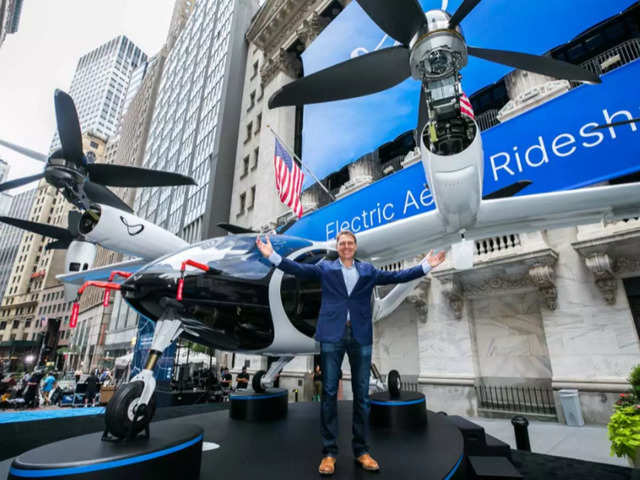
Say hello to the electric air taxi, the future of taxis, as NASA starts testing the first one. They will soon be a norm for flying passengers and cargo in busy cities. Here’s all you need to know.
What is NASA’s electric air taxi all about?

This air taxi is special from the ones before. It is an all-electric takeoff and landing (eVTOL) aircraft. Additionally, the helicopter is powered by six rotors, making it the best fit for busy city life. Moreover, the electric taxi produces the least amount of disturbance. NASA’s test campaign for the electric air taxi will be for two weeks. The aircraft is a part of the Advanced Air Mobility (AAM) project at NASA. The testing is taking place at Joby’s electric flight base in California where NASA and Joby Aviation will fly and test it. Also, according to the official statement, the electric aircraft can cover up to 150 miles in a go and reach up to 200 mph. Hence, the firm aims to obtain a U.S. Federal Aviation Administration certification and start producing them commercially by 2024.
“NASA’s AAM National Campaign is critical to driving scientific understanding and public acceptance of eVTOL aircraft. Also, we’re incredibly proud to have worked closely with NASA on the electric flight over the past 10 years and to be the first eVTOL company to fly as part of the campaign,” said Joe Ben Bevirt. Bevirt is the CEO and founder of Joby Aviation.
According to NASA’s official statement, Bevirt quoted that “From day one, we prioritized building an aircraft that not only has an extremely low noise profile but blends seamlessly into the natural environment.” “We have always believed that a minimal acoustic footprint is a key to making aviation a convenient part of the everyday movement without compromising the quality of life, and we’re excited to fly with NASA, our longtime partners in electric flight, to demonstrate the acoustic profile of our aircraft,” he added.
More on the testing and future developments
Engineers at NASA are using the Mobile Acoustics Facility to precisely measure sound emitted across various stages. Additionally, this is compared with others.”We have always believed that a minimal acoustic footprint is a key to making aviation a convenient part of the everyday movement without compromising the quality of life, and we’re excited to fly with NASA, our longtime partners in electric flight, to demonstrate the acoustic profile of our aircraft.”
The electric air taxi’s six rotor blades are carefully designed to ensure low voice. Additionally, to achieve this, the rotors and adjust the tilt, blade pitch, and rotation speed individually. This ensures that the blade vortex is less noisy. “The National Campaign Developmental Testing is an important strategic step in NASA’s goals to accelerate the AAM industry timeline. Moreover, these testing scenarios will help inform gaps in current standards. And, benefit the industry’s progress of integrating AAM vehicles into the airspace,” said Davos Hackenberg. He is the mission integration manager for NASA’s AAM project.
